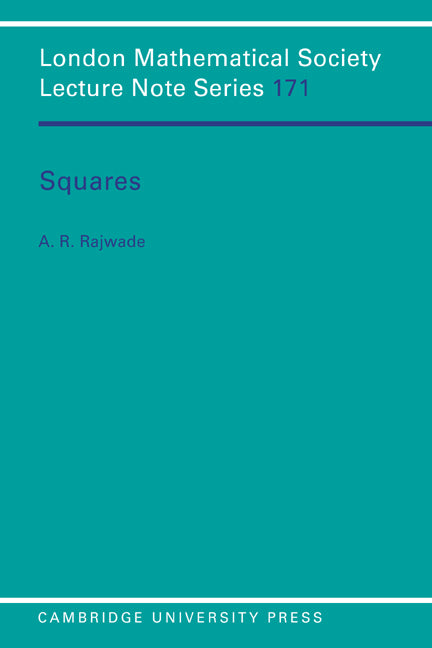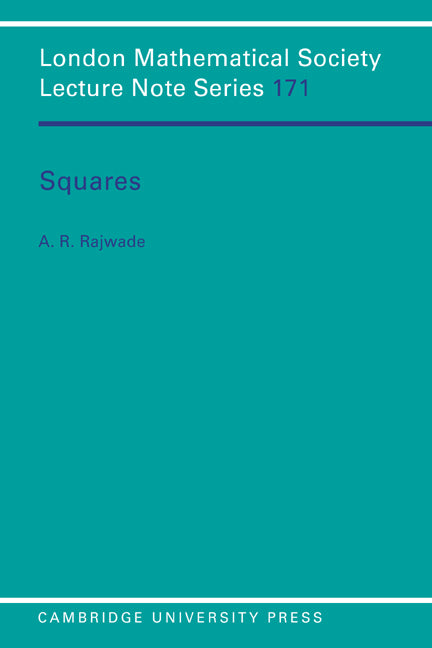Freshly Printed - allow 8 days lead
Couldn't load pickup availability
Squares
Many classical and modern results and quadratic forms are brought together in this book. The author deals with many different approaches to the study of squares.
A. R. Rajwade (Author)
9780521426688, Cambridge University Press
Paperback, published 14 October 1993
300 pages
22.8 x 15.1 x 2 cm, 0.393 kg
"...this book includes beautiful and important mathematics which can be explained at a fairly elementary level. Many of these theorems have appeared only in research journals and certainly deserve to be advertised in expository books and appreciated by a wide audience." Daniel B. Shapiro, The American Mathematical Monthly
Many classical and modern results and quadratic forms are brought together in this book. The treatment is self-contained and of a totally elementary nature requiring only a basic knowledge of rings, fields, polynomials, and matrices, such that the works of Pfister, Hilbert, Hurwitz and others are easily accessible to non-experts and undergraduates alike. The author deals with many different approaches to the study of squares; from the classical works of the late 19th century, to areas of current research. Anyone with an interest in algebra or number theory will find this a most fascinating volume.
1. The theorem of Hurwitz
2. The 2n theorems and the Stufe of fields
3. Examples of the Stufe of fields and related topics
4. Hilbert's 17th problem
5. Positive definite functions and sums of squares
6. An introduction to Hilbert's theorem
7. The two proofs of Hilbert's theorem
8. Theorems of Reznick and Choi, Lam and Reznick
9. Theorems of Choi, Calderon and Robinson
10. The theorem of Hurwitz–Radon
11. An introduction to quadratic form theory
12. The theory of multiplicative forms and Pfister forms
13. The Hopf condition
14. Examples of bilinear identities and a theorem of Gabel
15. Artin–Schreier theory of formally real fields
16. Squares and sums of squares in fields and their extension fields
17. Pourchet's theorem and related results
18. Examples of the Stufe and Pythagoras number of fields using the Hasse–Minkowski theorem
Appendix: Reduction of matrices to canonical form.
Subject Areas: Number theory [PBH]


